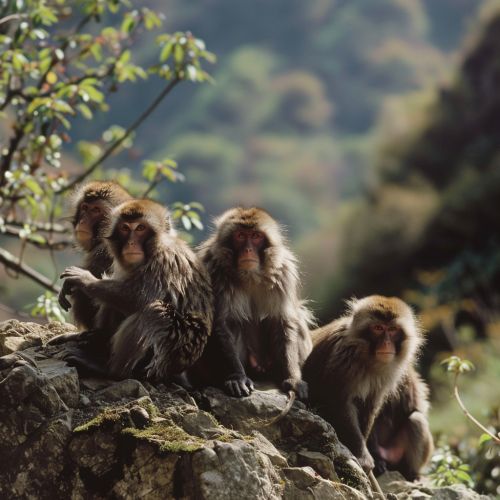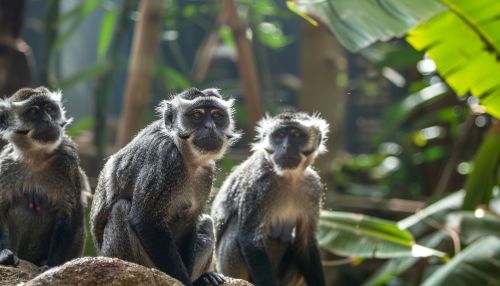Catarrhini
Taxonomy and Evolution
The Catarrhini, also known as Old World monkeys, are a parvorder of primates, one of the two subdivisions of the simians, the other being the platyrrhines. The Catarrhini are native to Africa and Asia, with members including the great apes and the lesser apes, as well as the monkeys of the Old World. The Catarrhini are distinguished by their narrow, downward-facing nostrils, which are close together and tend to be forward-facing. This is in contrast to the platyrrhines, or New World monkeys, which have wide, sideways-facing nostrils.


The Catarrhini emerged during the Oligocene epoch, roughly 25 million years ago. Their evolution is characterized by a series of adaptive radiations - periods of evolutionary change in which groups of organisms form many new species whose adaptations allow them to fill different ecological roles. These radiations led to a diverse range of catarrhine species, each adapted to specific environments and lifestyles.
Anatomy and Physiology
Catarrhini species share several common anatomical traits. Most notably, they possess a dental formula of 2.1.2.3, meaning two incisors, one canine, two premolars, and three molars in each half of each jaw. This dental formula is shared with other primates, including humans. Catarrhini also have a tubular ectotympanic (ear bone), which is a feature shared with other higher primates.
In terms of physiology, Catarrhini species are highly variable, reflecting their diverse lifestyles and habitats. Some species, such as the gibbons, are highly arboreal and have adaptations for brachiation, including long arms and a highly mobile shoulder joint. Others, such as the baboons, are more terrestrial and have robust bodies and powerful limbs for walking and running on the ground.
Behavior and Ecology
The behavior and ecology of Catarrhini species are as diverse as their anatomy and physiology. Some species, such as the chimpanzees and bonobos, are highly social and live in large, complex societies. These species exhibit a range of behaviors, including cooperation, conflict, and reconciliation, and they use a variety of vocalizations and gestures to communicate.
Other Catarrhini species, such as the orangutans, are more solitary. These species spend much of their time in the trees, foraging for fruit and other plant matter. They are also known for their ability to use tools, such as sticks and stones, to obtain food and defend themselves.
In terms of ecology, Catarrhini species occupy a wide range of habitats, from tropical rainforests to savannas and mountainous regions. Their diets are equally varied, with some species primarily eating fruit, while others eat leaves, insects, or even meat.
Conservation
Many Catarrhini species are threatened by habitat loss, hunting, and disease. Conservation efforts are underway to protect these species and their habitats. These efforts include the establishment of protected areas, captive breeding programs, and research into the ecology and behavior of these species.
